SYRIA
THE LINK BETWEEN SUMER AND NILE
The journey
- Bergamo-Amman-Damasco
- Damasco-Palmyra
- Palmyra-Apamea Ebla-Hama
- Alep
- Alep-Ugarit-Maalula-Damascus
- Damascus-Amman Bergamo
The history of Syria is the history of our civilization. Great biblical figures, like Abraham and Moses,the Sumer, the Greco-Roman , the Turkish, the Persian and Arab empires are parts of Syrian history.
Names like Damascus, Alep, Palmyra and Ebla take us in the magic world of “ The Thousand and One Night “, full of mistery,secrets and powerful leaders.
According to a syrian writer G. Saade
In Syria one can literally learn the history of the world. All the Gods have lived in our skies and all the great civilisations of the mediterranean basin hawe flourished on our soil.
Nothing of the ancient splendour has remained in Damascus and Alep, but we got excited walking through the ruins of Palmyra, Apamea, Ebla and Ugarit.
The map of Syria shows ancient and modern towns a land considered the cradle of civilisations.

PALMYRA
Its large archeological area emerges in the centre of the flat Syrian desert, between the Euphfrates and the Mediterranean Sea. It's impossible to forget the imposing Roman Road , with its high ochre columns, the Baal Sanctuary, the Theatre and the panoramic view of the site from the Arabian Castle, at the sunset. But where is its famous and beautifull queen Zenobia? She promised to wait for us just under the arch.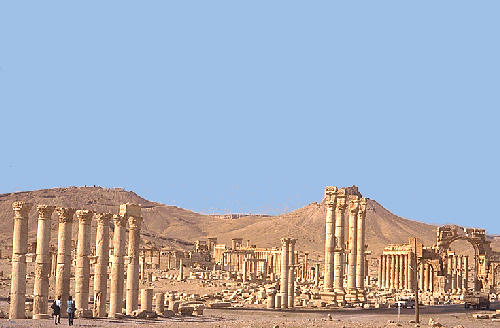
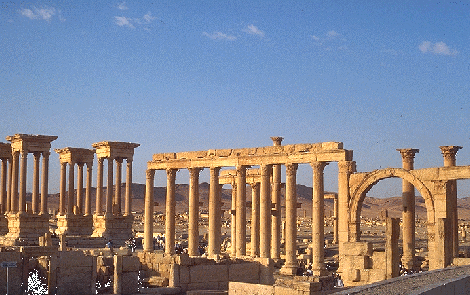
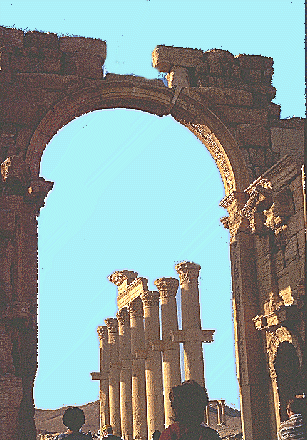
People of the desert welcome us in their black tent and offer us a strong tea.

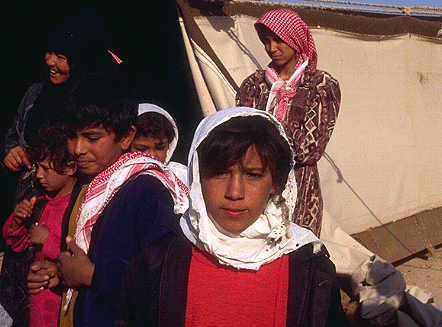
APAMEA.
The place is isolated on the hill , no tourists, no people. Some boys are running around the high and beautifull columns and ,at our arrival, offer us some ancient Roman or Greek coins, found buried in the ground. We walked silently along the most imposing columned street in the ancient world, in a magic atmosphere full of the splendour of the past.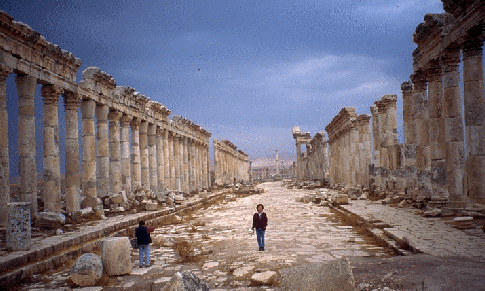
QALAH SIMAN
In the picture above you can see the ruins of the doorway of S. Simeon Christian Church, built just in the place where Saint Simeon had been living for 47 years on a column .He was very famous and venerated by the people as a wise and holy man.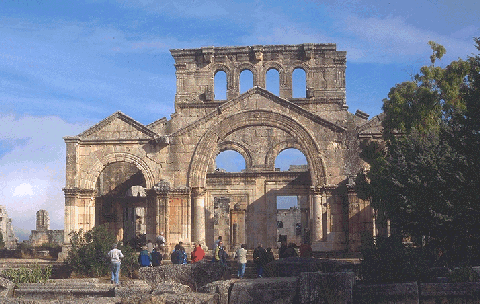
QALAT AL-HOSN
The Crusaders Castle,still very well preserved,lonely and massive on the top of a hill, guards the land below; you can also find a nice restaurant inside. Walking through its halls, you look forward and could imagine the Knights ready for the battle against the muslims. The Krak des Chevaliers is certainly the most evocative and largest castle in the Middle East.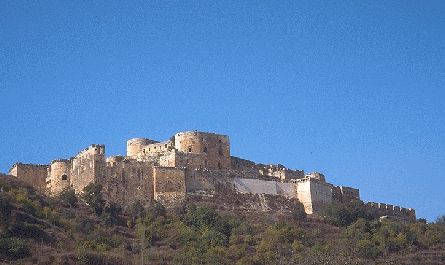
AYN DARAH
The place was the great surprise of our trip to Syria.It wasn't included in the tour. We reached the area climbing towards the hill-top; suddenly we saw the big black lion of the photo. We felt like Indiana Jones set out to discover the treasure ! Infact, on the hill-top we found the massive rests of an Aramaic temple in black basalt, unique in the world.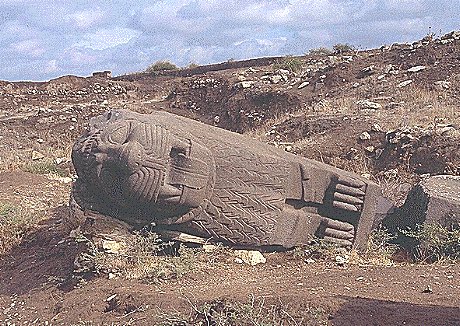
EBLA
It was the most important archaeological discovery of this century, thanks to an Italian archeologist, Paolo Mathiae. Since 2500 b.C. the site of Tell Mardikh was occupied by a large city , Ebla the capital of Northern Syria. Thousands of tablets, written in cuneiform way, were found in the archives and are now very important documents to reconstruct the political,social and economical history of the Middle East, at the beginning of the civilization.
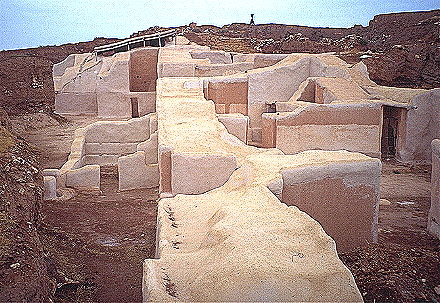
DAMASCUS
Damascus is known to many archaeologists as the oldest continuously inhabited city in the world It has always been a great trading city.Tablets discovered in Ebla are giving us informations about the city and his products. Roman Emperor Julian called it "Pearl of the East". The Quran described it as one "whose like has never been built before". Damascus became the capital of an empire stretching from Spanish plains ( west) to the steppes of Central Asia (east). This period (661 to 750) came to an end with the downfall of the Omayyads and the rise of the Abbasids, who set up their capital in Baghdad.The legendary Saladin made Damascus the capital of united Syria and Egypt; he defeated the Crusaders' attempt to conquer the region.Saladin'death was followed by a long period of decline, destruction , reconstruction, and stagnation until the twentieth century, when the city became the capital of an independent Syria.
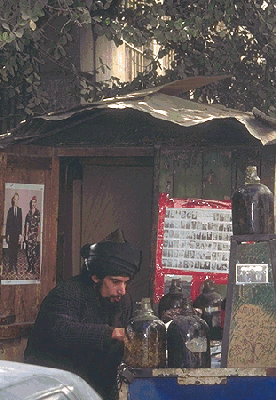
HAMAH
One of the "Norie ", big medieval wheels along the river Oronte. Nothing else remains of one of the most ancient towns in the world. Infact it was destroyed by Sargon II, king of the Assyrians, in 720 b.C.
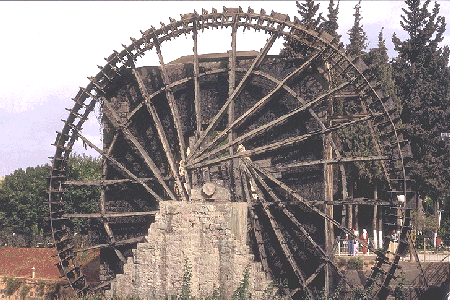
Roberto Dalfini.dalfinir@usa.net
Ultimo aggiornamento:20-04-99